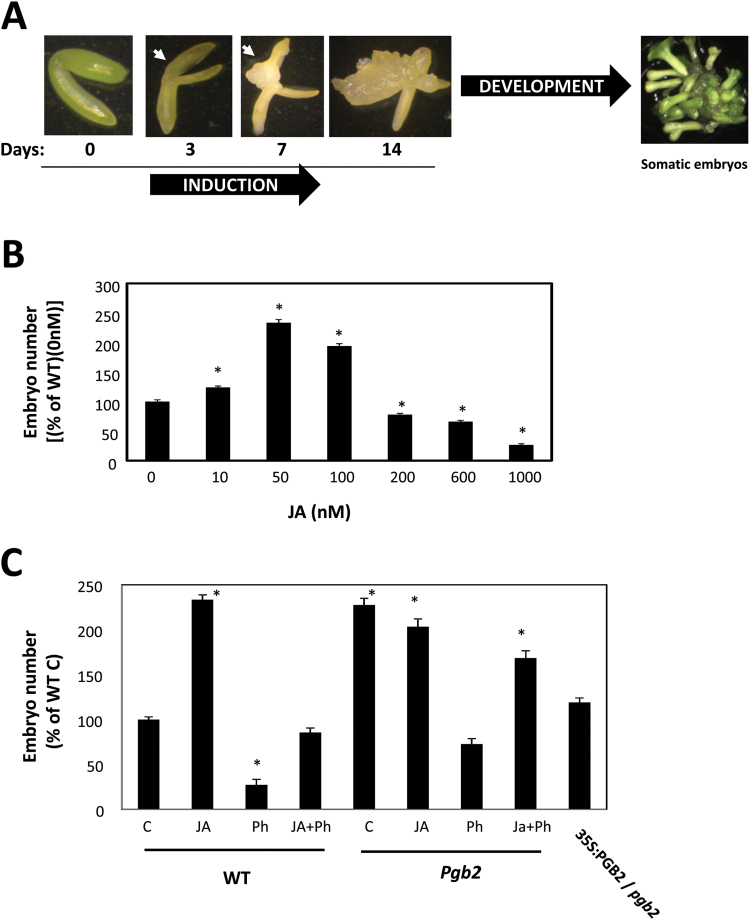Fig. 1.
Effects of altered levels of jasmonic acid (JA) on Arabidopsis somatic embryogenesis. (A) Arabidopsis somatic embryos are generated through a two-step process. Dissected zygotic embryos are initially plated on 2,4-D-containing induction medium required for the formation of embryogenic tissue. After 14 d, the explants are transferred onto a hormone-free development medium which stimulates the production of somatic embryos. Fully developed somatic embryos can be obtained after 9 d on development medium. Arrows indicate the formation of the embryogenic tissue. (B) Changes in embryo number in the wild type (WT) line cultured with increasing levels of JA applied to the induction medium. Values are means ±SE of at least three biological replicates. An asterisk indicates statistically significant differences (P≤0.005) from the control (JA=0nM) value set at 100%. (C) Effects of applications of JA (50nM) and/or Phenidone (Ph) on the number of somatic embryos produced by the WT, pgb2, and 35S:PGB2/pgb2 lines. Values are means ±SE of at least three biological replicates. An asterisk indicates statistically significant differences (P≤0.005) from value of the WT (C) set at 100%. (This figure is available in colour at JXB online.)

